How Adobe Achieved Double-Digit CTR Increase via International SEO
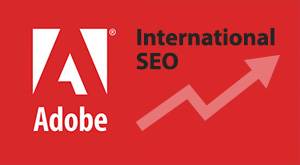 After learning about all the best tools for international SEO, you may ask yourself, “Is it really worth the extra time and effort to make it work?”
After learning about all the best tools for international SEO, you may ask yourself, “Is it really worth the extra time and effort to make it work?”
In determining its worth, let’s look at a real-life example of successful international SEO marketing.
With more than half of its revenue earned outside the U.S., Adobe Global SEO team has to manage 30+ domains, subdomains, & microsites, 1.8M pages, 10M keywords, 14K ad copy rotations and 1000+ landing pages everyday. It’s safe to say that Adobe’s online marketing effort is among the most sophisticated across different industries.
In 2013, their SEO team were able to achieve double-digit increases in their sites’ impression and click-through rate in SERPs. And for some of their international sites, average visits and revenue were increased by 485%(!) and +133% respectively. How did they bring such a significant improvement to a giant enterprise like Adobe?
Fortunately, Dave Lloyd, Senior Manager of Global Search Marketing at Adobe Systems, explained how they work behind the scenes in great details at Share13, a premier digital marketing event organized by BrightEdge, an enterprise SEO platform.
We’ve summarised some of the key points in his presentation here.
Localization Matters
In order to be successful in international SEO, Dave believes that people have to understand the importance of localization, especially for those who think that localization is equal to translation.
Oftentimes, a translation that is linguistically correct may not express the right meaning in your target audience’s culture and context.
Therefore, thoughtful marketers should pay attention to relevancy when doing in-country keyword research. They have to make sure the chosen keywords are the ones that users are actually searching for. When the keyword’s meaning is accurate and makes sense, it will greatly improve the click-through rate in local search result.
“The premise is understanding why customers are coming to your site – what unique tasks are global and mobile users trying to accomplish? Once core markets are understood, it’s critical to define your team & company’s unique value to deliver to those markets.” – Dave Lloyd
Below is Adobe’s keyword ranking improvement in three months due to localization in Japan and Korea.
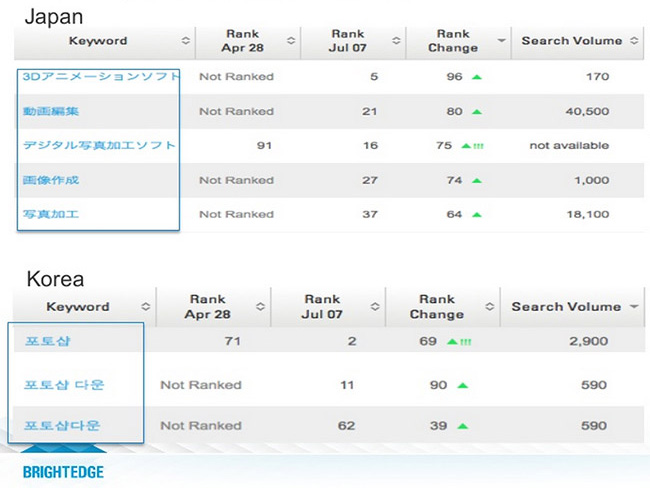
SEO Localization Process
The practice of optimizing your website for search has a lot of moving parts, so good planning and alignment processes are essential for an effective international SEO campaign. To kickstart a SEO project, Dave suggests marketers to follow this general process:
- In-country keyword research
- Each keyword mapped to preferred landing page
- Content localized using keywords (content, video, images, links)
- Reviewed by Editorial & SEO & added to Sitemaps
- Localized & optimized content goes live
After understanding the core ideas behind this process, companies can innovate it based on their own needs. Below is Adobe’s internal localization process, see if you can learn a thing or two from this world-class company.
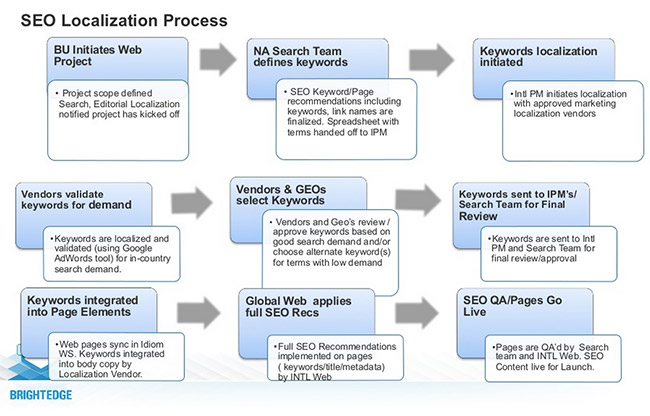
Href Alt Lang in XML Sitemaps
Historically, Google’s search algorithm values large multinational sites more than smaller single country sites. As a result, localized sites are often outranked by the US or predominant language version sites. For example, many US sites have higher rankings than Australia sites, even if users did the search in Australia.
To tackle this challenge, webmasters should add HrefLang annotations to their XML Sitemaps, like the image below, indicating to Google which country a specific page is targeting.

Image source: Search Engine Land
By following these practices, Adobe improved its international sites’ rankings in Germany, France and Spain significantly.
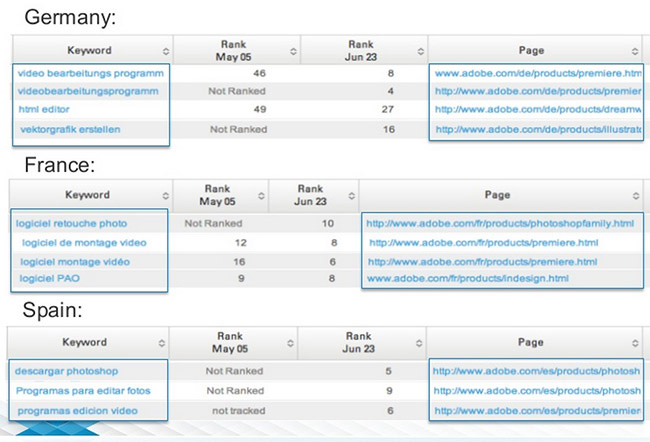
Global Title Tags and Meta Desc
Finally, some marketers may forget that there are difference in character limits for title tags and meta descriptions in languages using single-byte characters (e.g. English and Spanish) and double-byte characters (e.g. Japanese and Chinese).
Google typically displays the first 60 characters (with spaces) of a title tag and 160 characters (with spaces) of a meta description. For double-byte characters, the limit is half that.
With that in mind, we have to make sure our main in-country keywords and clear call-to-action showing up within the limits in different languages.
Check out Adobe’s SEO enhancement in Italy and Russia as well.
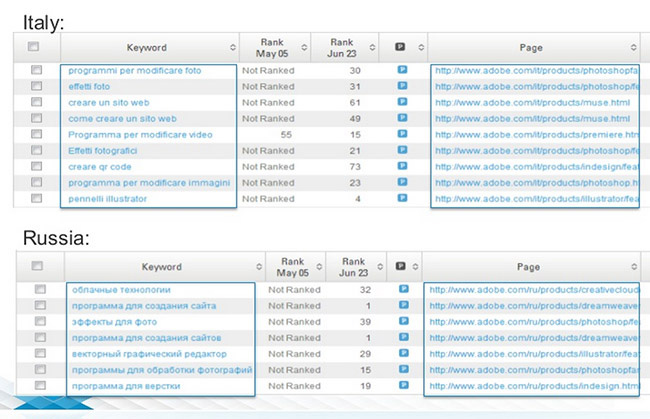
Want to learn more? Check out Dave’s actual slides below or follow him on Twitter to keep up with the latest trend in international SEO.


 Written by -
Written by - 




 Written by
Written by 


